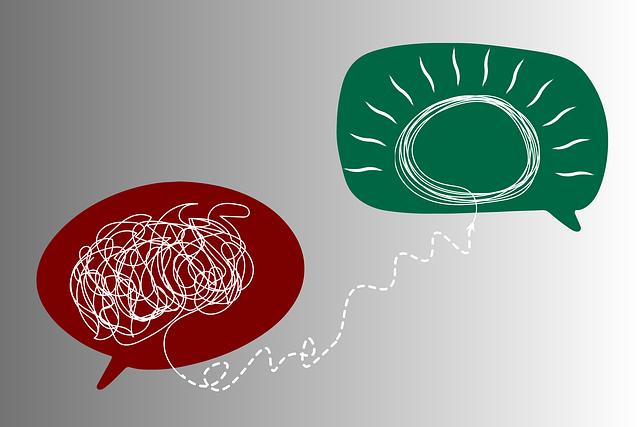Littleton Biofeedback Therapy emphasizes understanding community needs through targeted outreach programs that address specific mental health challenges like stress and anxiety. By recognizing diverse populations' unique issues, they develop tailored strategies for deeper engagement. Their non-invasive biofeedback techniques improve relaxation and reduce stress, benefiting youth, seniors, and cultural groups. Partnerships with local organizations expand reach while strategic planning, digital platforms, and data-driven design ensure effective resource allocation. Measuring impact demonstrates improved mental well-being and enhanced community resilience through Littleton Biofeedback Therapy's outreach initiatives.
Community outreach programs, such as Littleton Biofeedback Therapy initiatives, play a vital role in enhancing mental well-being. This article explores the strategic implementation of such programs, focusing on understanding community needs and designing effective therapies. We delve into building partnerships with local organizations and present successful implementation strategies. Additionally, we highlight evaluation methods to measure the impact of these outreach efforts, demonstrating their ability to revolutionize access to biofeedback therapy in Littleton.
- Understanding Community Needs: Identifying Targets for Outreach
- Designing Effective Programs: Incorporating Biofeedback Therapy
- Building Partnerships: Collaborating with Local Organizations
- Implementing and Promoting: Strategies for Success
- Measuring Impact: Evaluating the Benefits of Littleton Biofeedback Outreach
Understanding Community Needs: Identifying Targets for Outreach

Understanding community needs is a pivotal step in implementing successful outreach programs, like Littleton Biofeedback Therapy. By identifying specific targets within the community, it becomes possible to tailor services that address pressing issues. For instance, areas grappling with high stress levels and anxiety could greatly benefit from programs focused on mood management and anxiety relief using biofeedback techniques. This targeted approach ensures that resources are allocated effectively to where they’re needed most, fostering emotional well-being promotion techniques within the community.
Community outreach programs must recognize and embrace the diverse nature of populations they serve. Whether targeting youth, seniors, or specific cultural groups, each segment has unique challenges and needs. By delving into these nuances, organizations like Littleton Biofeedback Therapy can develop strategies that resonate with their target audiences, fostering deeper engagement and more impactful outcomes in terms of mental health support and stress management.
Designing Effective Programs: Incorporating Biofeedback Therapy

Effective community outreach programs can significantly enhance mental well-being by incorporating therapeutic practices such as Littleton Biofeedback Therapy. This non-invasive technique teaches participants to control their physiological responses, promoting relaxation and stress reduction. By integrating mindfulness meditation techniques into these programs, individuals learn to manage anxiety and improve focus, fostering a sense of calm amidst life’s challenges.
Such programs can play a pivotal role in depression prevention and burnout prevention within communities. Regular practice of biofeedback therapy alongside mindfulness meditation has shown promising outcomes in improving mood and energy levels. By making these therapeutic tools accessible through community outreach, individuals can gain valuable coping mechanisms, leading to enhanced resilience and overall mental health.
Building Partnerships: Collaborating with Local Organizations

Building partnerships with local organizations is a strategic move for successful community outreach programs, especially when offering services like Littleton Biofeedback Therapy. By collaborating with established entities, such as schools, community centers, and non-profit groups, the program can expand its reach and impact. These partnerships facilitate the sharing of resources, expertise, and networks, enhancing the overall effectiveness of the initiative. For instance, working alongside local mental health organizations can provide access to individuals seeking trauma support services or self-esteem improvement programs, aligning with the core objectives of biofeedback therapy.
Engaging in such collaborations ensures that the program’s offerings resonate with the specific needs of the community. Adhering to the mind over matter principles, these partnerships can foster a supportive environment where individuals from all walks of life benefit from holistic wellness approaches. Ultimately, by leveraging collective efforts, Littleton Biofeedback Therapy has the potential to create a ripple effect, transforming lives and fostering a healthier, more connected community.
Implementing and Promoting: Strategies for Success

Implementing community outreach programs, such as those offered by Littleton Biofeedback Therapy, requires strategic planning to ensure success. Effective promotion is key; leveraging digital platforms and local partnerships can significantly increase visibility and engagement. Collaborating with mental health organizations, schools, and community centers not only amplifies reach but also fosters trust and credibility.
To truly succeed, these programs must be tailored to the specific needs of the target population. Conducting a Risk Assessment for Mental Health Professionals is crucial to understanding local mental wellness challenges. This data-driven approach informs program design, ensuring resources are allocated efficiently. Moreover, aligning initiatives with broader Mental Health Policy Analysis and Advocacy goals can lead to systemic changes, enhancing the long-term sustainability of community outreach efforts.
Measuring Impact: Evaluating the Benefits of Littleton Biofeedback Outreach

Measuring the impact of community outreach programs, such as Littleton Biofeedback Therapy, is crucial to understanding their effectiveness in promoting mental well-being. By evaluating the benefits, we can assess how these initiatives contribute to Stress Reduction Methods and Anxiety Relief within the community. Through regular assessments, participants’ progress in managing stress and improving overall mental health is tracked. This data provides valuable insights into the success of the program, allowing for adjustments and improvements to better serve those in need.
The benefits extend beyond individual participants; they reflect a broader positive impact on the community as a whole. By providing accessible Littleton Biofeedback Therapy and Stress Management techniques, outreach programs empower individuals to take control of their mental health. This, in turn, can lead to increased productivity, improved relationships, and enhanced overall quality of life for program recipients.
Implementing community outreach programs, particularly focusing on Littleton Biofeedback Therapy, requires a strategic approach. By understanding local needs, designing tailored programs with biofeedback therapy, building strong partnerships, and utilizing effective implementation and promotion strategies, significant positive impacts can be achieved. Measuring these outcomes is crucial to demonstrate the benefits and ensure ongoing success. This comprehensive approach not only enhances access to essential services but also fosters a healthier, more connected community in Littleton.














